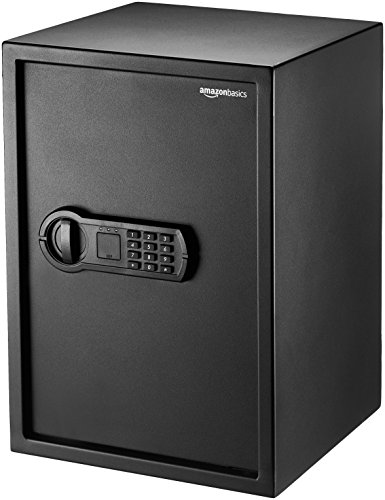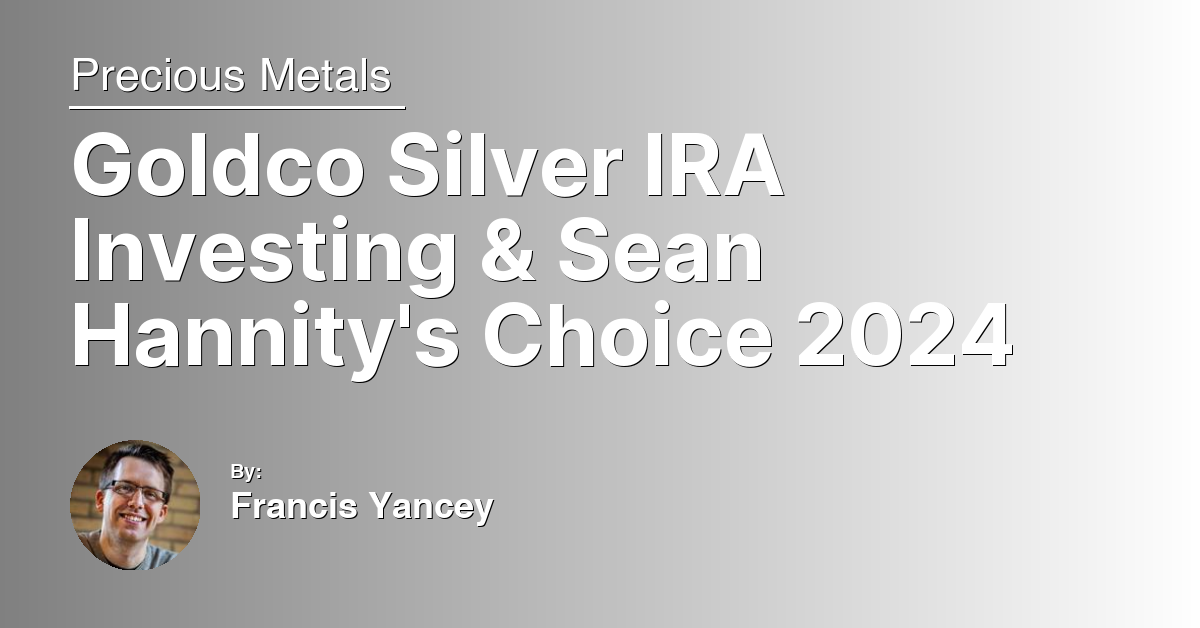In an ever-evolving financial landscape, diversifying one’s retirement portfolio has become more crucial than ever. This guide delves into the world of Precious Metals IRAs, offering a comprehensive look at investing in gold and silver as a means to safeguard and grow your retirement savings. With insights on choosing the right custodians and navigating the complexities of this unique investment avenue, our guide is an invaluable resource for those looking to add a touch of luster to their financial future.
Understanding IRA Custodians for Precious Metals
When investing in a Precious Metals IRA, selecting a knowledgeable custodian is vital. Custodians are financial institutions, often banks or trust companies, approved by the IRS to hold IRA assets on behalf of the account owner. Their role extends beyond mere storage; they ensure that your precious metals investment—be it gold, silver, platinum, or palladium—meets the stringent purity and fineness requirements set by the IRS.
Moreover, custodians facilitate the buying and selling of precious metals within your IRA, maintaining compliance with the complex regulations that govern these transactions, including those under the Employee Retirement Income Security Act of 1974. This compliance is crucial for preserving the tax advantages associated with IRAs, whether it’s a Traditional or Roth IRA.
Choosing the right custodian impacts not just the security of your precious metals but also the flexibility and efficiency of managing your retirement portfolio. A reputable custodian should offer transparent pricing, robust customer service, and a seamless process for adding precious metals to your retirement savings, thus serving as a key ally in diversifying your investment and safeguarding your future against market volatility and inflation.
The Journey of Precious Metals IRAs: From Creation to Evolution
The journey of Precious Metals IRAs has significantly evolved since its inception, becoming a pivotal option for investors aiming to diversify their retirement portfolios beyond traditional stocks and bonds. Initially, these IRAs allowed for investment in gold and silver, but over time, they expanded to include platinum and palladium as investment options, enriching the diversity available to investors.
The inclusion of precious metals in an Individual Retirement Account (IRA) was a response to the growing demand for alternative investments that could serve as a hedge against inflation and economic uncertainty. This demand was recognized by the United States Congress, which amended the Employee Retirement Income Security Act of 1974 to allow precious metals as part of retirement savings.
To invest in these assets, investors must rely on a custodian bank to purchase and hold the metals on their behalf, ensuring compliance with Internal Revenue Service (IRS) regulations regarding fineness and storage. This requirement introduced a new level of security and trust in precious metals investing, distinguishing it from other asset classes.
As the market for these IRAs matured, the variety of products expanded, offering investors options ranging from coins like the American Eagle to bullion bars, further customizing their investment strategy. The evolution of Precious Metals IRAs reflects a broader trend towards diversification (finance) and alternative investments in the face of market turbulence and the quest for assets with intrinsic value.
Steps to Initiate a Self-Directed Precious Metals IRA
1. Choose a reputable custodian. Begin by selecting a custodian bank or financial institution approved by the Internal Revenue Service (IRS) to manage self-directed IRAs, including those holding precious metals like gold, silver, platinum, and palladium.
2. Open a self-directed IRA account. Fill out the necessary paperwork with your chosen custodian. Decide between a traditional IRA for pre-tax contributions or a Roth IRA for after-tax contributions, each offering distinct tax advantages.
3. Fund your IRA. You can transfer funds from an existing retirement account, rollover a pension or 401(k), or make a direct deposit to fund your new precious metals IRA.
4. Select your metals. Choose the types of metals you wish to include in your portfolio. Options include coins, such as the American Eagle, and bars. Consider diversification to mitigate market turbulence and enhance your portfolio’s resilience against inflation and currency devaluation.
5. Purchase and store. Once you’ve made your selection, your custodian will facilitate the purchase of your chosen metals and ensure they are stored securely in a trust or bank with insurance and under federal regulations for safety and compliance.
This streamlined process aims to protect your investment and ensure it serves as a stable store of value for your retirement.
Storage Solutions for Precious Metals within an IRA

When investing in precious metals within an IRA (Individual Retirement Account), selecting the right storage solution is crucial for both compliance and security. The IRS mandates that precious metals, including gold, silver, platinum, and palladium, must be stored with an IRS-approved custodian. These custodians ensure that your metals are kept in secure, insured facilities that comply with IRS regulations, safeguarding your investment against theft and loss.
Two primary storage options exist: segregated and non-segregated. Segregated storage means your precious metals are stored separately from other investors’ assets, providing an additional layer of security and peace of mind. In contrast, non-segregated storage, while often more cost-effective, commingles your assets with those of other investors.
Choosing the right custodian is vital. Look for companies with stellar reputations for customer service, robust security measures, and transparent pricing.
Key Considerations Before Investing in Precious Metals
Before diving into the world of precious metals IRA investing, it’s crucial to weigh several key considerations. First, understand the intrinsic value of precious metals like gold, silver, and platinum. These assets have historically held their value amidst market volatility, offering a hedge against inflation and currency devaluation.
Consider the tax advantages associated with precious metals IRAs, which are similar to traditional retirement accounts. This means you can potentially grow your investment tax-deferred or even tax-free, depending on the account type. However, be aware of the rules and regulations set by the United States Congress and the IRS regarding contribution limits, distributions, and allowable metals.
Diversification is another critical factor. Precious metals can diversify your portfolio, reducing the risk of overexposure to any single asset class, such as equities or bonds. Yet, it’s essential to balance this with other investments to avoid overconcentration in metals, which can be less liquid than stocks or bonds.
Lastly, consider the costs involved, including custodian fees, storage fees, and potential insurance for your physical assets. These costs can impact the overall return on investment, so choose a reputable custodian to help manage these expenses effectively.
Navigating the Purchase of Precious Metals: Dealer Selection and Pricing
When selecting a dealer for the purchase of precious metals for your IRA, focus on reputation and transparency. Established dealers often provide more reliable pricing and quality assurance, crucial for long-term investments like gold and silver. Investigate their customer service records, ensuring they offer solid support and clear communication.
Pricing of precious metals is another vital consideration. It should reflect the current market value, plus a reasonable premium for the dealer’s services. This premium covers the costs of minting, distribution, and the dealer’s profit margin. Compare prices from multiple reputable dealers to ensure you’re receiving a fair deal.
Remember, investing in precious metals like platinum and palladium can offer diversification for your portfolio, potentially providing a hedge against market volatility and inflation. These metals, alongside traditional investments such as stocks and bonds, contribute to a balanced investment strategy, leveraging their scarcity and intrinsic value as a store of value.
Lastly, be aware of the tax advantages associated with precious metals IRAs and how these can complement your pension, Social Security benefits, and other retirement income sources. Proper dealer selection and understanding pricing mechanisms are crucial steps in leveraging precious metals as a resilient investment vehicle within your retirement strategy.
The Importance of Spot Price in Precious Metals Investments
Understanding the spot price of precious metals is crucial for any investor considering gold, silver, or platinum as part of their IRA portfolio. Spot price reflects the current market value of a metal, determining the cost at which it can be bought or sold at a specific time. This value fluctuates due to various factors including market demand, geopolitical stability, and economic indicators, making it fundamental for timing investments wisely.
For precious metals IRA investors, the spot price is essential for maximizing returns and managing the tax advantages associated with these types of investments. It affects the initial purchase, ongoing portfolio valuation, and eventual sale, directly impacting the overall performance of the investment.
Moreover, in the context of diversification, understanding spot prices helps investors make informed decisions about when to add or reduce their holdings in precious metals relative to other asset classes. This strategic approach can safeguard against market uncertainty, contributing to a more stable retirement planning landscape, particularly in relation to traditional equities, bonds, or even Social Security benefits.
Finally, the intrinsic value of precious metals, underscored by their scarcity and historical significance as a store of value, remains a compelling reason for their inclusion in a diversified portfolio. Spot prices, therefore, offer a real-time lens through which investors can assess their potential for long-term wealth preservation amidst fluctuating market pressures.
Diversifying Your Retirement Portfolio with Precious Metals
Precious metals, recognized for their intrinsic value, can be a safer option compared to the fluctuating stock market. By investing in various forms like coins or gold bars, you’re not just relying on paper assets or the performance of the Federal Deposit Insurance Corporation-backed banks.
Moreover, precious metals IRAs are governed by specific trust laws, ensuring your investment is securely held. This is critical, especially when considering the unpredictability of employment, social security, and defined benefit pension plans in the United States.
Essential Precious Metals Investment Checklist
| Item | Description |
|---|---|
| 1 | Research and understand the different types of precious metals available for investment, such as gold, silver, platinum, and palladium. |
| 2 | Consider the current market conditions and trends to determine the best time to buy or sell precious metals. |
| 3 | Choose a reputable precious metals dealer or custodian to purchase and store your investments. |
| 4 | Set clear investment goals and objectives for your precious metals portfolio. |
| 5 | Stay informed about any regulatory changes or updates that may impact your precious metals investments. |
| 6 | Diversify your precious metals holdings to mitigate risk and maximize potential returns. |
FAQ
Who is the custodian of the precious metals IRA?
The custodian of the precious metals IRA is TPMD, which is used by GoldStar Trust Company, Strata Trust Company, Kingdom Trust, and Midland Trust Company.
Can you hold precious metals in an IRA?
You can hold precious metals in an IRA.
How do I choose a gold IRA custodian?
To choose a gold IRA custodian, consider factors like fees, privacy policies, years in business, customer reviews, transaction turnaround time, and customer service availability.

